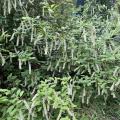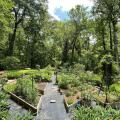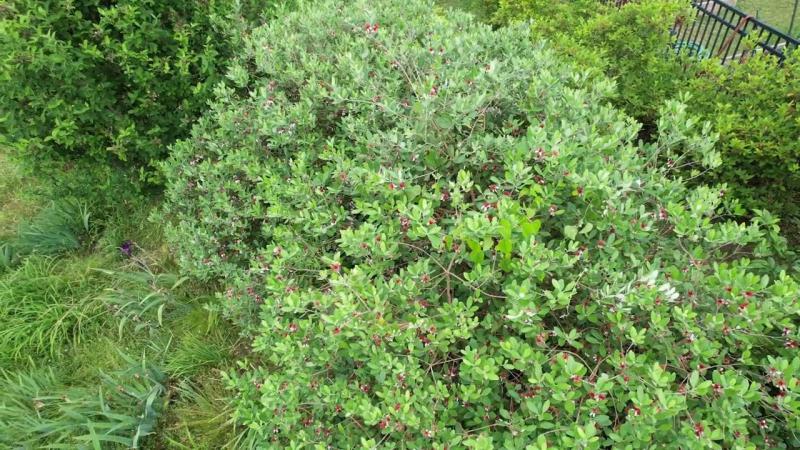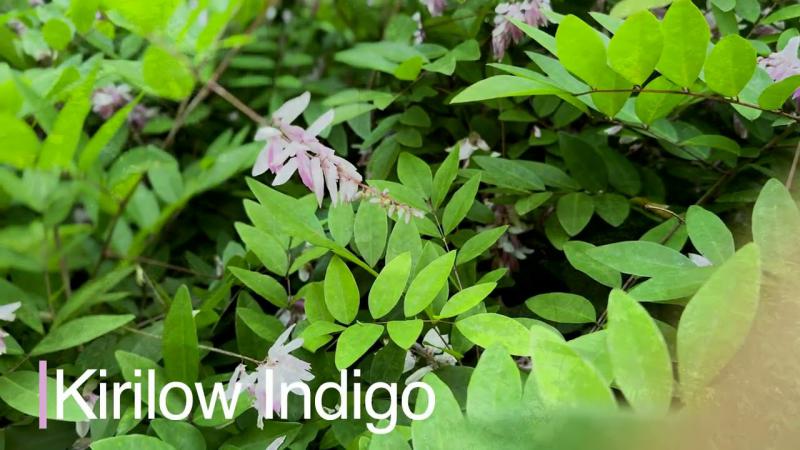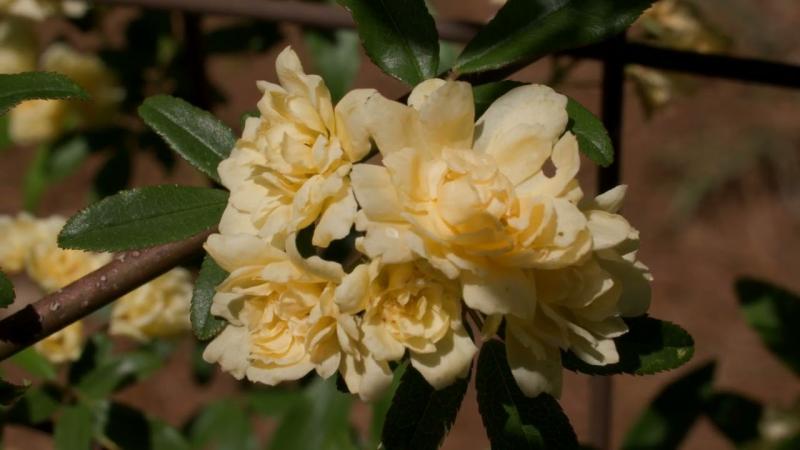Designing Perennial Plantings
While beds and pots of annuals may be replanted with ease, perennial plantings may live for many years and, therefore, require some planning. Flower beds are usually highly visible and should work well into the total landscape design. Otherwise, large areas of the landscape may be bare part of the year.
Many perennials, like annuals, are effective in mass when they are in bloom, but because of their seasonality, they are better viewed as small clumps of color and texture to accent other plants. You can often build a design to support or accent a favorite plant or group of plants. Use small evergreen shrubs, flowering trees, or such hard features as a fence, stone, bench, birdbath, or garden art to enhance a flower garden and "carry" it through all the seasons.
One of the easiest design "tricks" is to interplant groups of flowers that have contrasting shapes. For example, daylilies can have their large flowers set off well by the spikes of blue salvia and the round flowers of yarrow. The large leaves of canna and sword-like form of iris plants have a dramatic effect when used in groups among other less bold plants.
A natural way to begin planting perennials is to create islands of flowers in an open lawn, but because such beds are easily viewed from many sides, they often require high maintenance to keep them attractive.
Border plantings along a wall, fence, or hedge can soften the transition of landscape structures into the rest of the landscape or can create alleys of color. Rectangular beds lend themselves to a border planting where space is restrictive. When planting a perennial border against a hedge, fence, or wall, leave a little space between it and its backdrop. This allows for better air circulation, more light penetration, and ease of maintenance from the rear of the bed. Perennial borders often are 6 to 8 feet wide, allowing adequate space for at least a combination of six or more species, front to back, yielding a continual bloom.
To prevent turfgrass from growing into the perennial bed and becoming unsightly, use some form of broad edging or separating strip. Bricks laid flat, flagstone, bare ground, or a heavy layer of mulch such as wood chips or bark will help keep out grass.
Perennials may be grouped according to color, intermixing plants that bloom at different intervals for a continual display. Early bulbs may be planted with spring yarrow and iris, which usually fade before daylilies and canna begin their season of color. Fall sunflowers and ornamental grasses complete the season. Select plants that have not only attractive long-lived blooms, but those that have attractive foliage.
Plant height is a major consideration. In border plantings, the tallest plants are usually placed towards the rear to serve as a backdrop with a few moved forward to prevent monotony in the design. In island plantings, they are placed towards the center. Fall-blooming perennials are usually the tallest, making them the best backdrop or accent plants. Most of the middle height perennial plants are summer bloomers and may occupy the majority of the middle space. Spring-blooming perennials are primarily short plants; place them toward the front. Emerging foliage and flowers of later blooming plants can help hide the fading foliage of earlier flowers. Narrow beds with excessively tall plants are usually not effective displays. Whether for borders or island beds, keep the width of a planting about twice the height of the tallest plant.
Publications
News
There are a few plants that bring both beauty and function to the landscape, and pineapple guava is one of those rare gems that does it all.
During a recent visit to Paul and Donna Ingram’s garden in Vicksburg, Mississippi, I was inspired by how beautifully they’ve showcased this remarkable plant.
Deciduous plants are those that shed their foliage at the end of the growing season. I recently had the pleasure of seeing the beautiful collection that Warren County Master Gardener Beattie Williams has curated.
While there were several standout selections in her garden, one that immediately caught my eye was Virginia sweetspire. This is a native shrub that offers something beautiful for every season.
The peaceful backyard garden of Beattie Williams in Vicksburg, Mississippi, is a master class in the use of raised beds in a home landscape.



